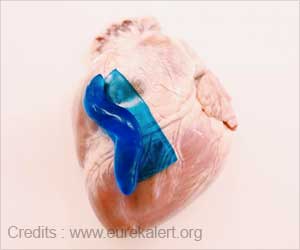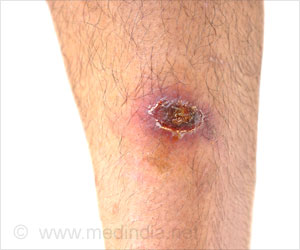Highlights:
- MeTro, a highly elastic hydrogel can tightly seal moving tissues without the need for additional sutures or staples.
- When applied to an injured lung area in pigs, it bonds and interlocks with the tissue surface.
- It is a novel solution for the efficient repair of wounds replacing currently used methods.
Replacing Hard Sealants with Elastic Ones
Currently, surgeons use staples, sutures and wires to bring and hold the wound edges together until the ruptured or pierced organs and tissues can heal. These procedures have various drawbacks, including and not limited to, difficulty in sealing back organs and tissues in hard-to-reach areas of the body, not completely sealing wounds on time, and the risk of further damaging and infecting tissues.Current techniques become even more challenging to use in wounds in fragile or elastic tissues that continuously expand or contract and relax, like the breathing lung, the beating heart and pulsing arteries.
To find a remedy to some of these problems, biomedical engineers have developed a range of surgical sealants that can bond tissues to stop leakages. Yet, "currently available sealants are not suitable for most surgical applications and they do not work alone without the need for suturing or stapling because they lack an optimal combination of elasticity, tissue adhesion and strength. Using our expertise in creating materials for regenerative medicine, we aimed to create an actual fix for this problem in a multi-disciplinary effort with clinicians and bioengineers," said Ali Khademhosseini,
The focus of the team was to find a solution in the lung and other elastic tissues where the problem was most acute.
Inventing the Highly Elastic Hydrogel MeTro
Earlier, in 2013, Khademhosseini, Annabi and Anthony Weiss, Ph.D., from the University of Sydney's Charles Perkins Centre and Faculty of Science, inspired by the natural abilities and synthesis of elastin fibers, had started to explore the regenerative capabilities of tropoelastin, the precursor protein from which the body derives functional elastin. The researchers learned how to produce large amounts of recombinant human tropoelastin in E. coli bacteria by mimicking the body's mechanisms.They used a so-called photo-cross-linking reagent named methacrylate and a pulse of UV light to crosslink different tropoelastin proteins in a solution to create a versatile highly elastic hydrogel they named MeTro. MeTro can be grown as tissue constructs to generate a micro-patterned matrix to which heart cells can adhere, and hence repair cardiac damages.
The next step was to vary the concentrations of the crosslinking reagent and tropoelastin; the result was a range of MeTro hydrogels with different elasticities along with varied cohesive and tissue adhesive strengths. The compositions of MeTro that performed best in animal models with lung and vascular injuries were then identified with the idea of matching them to the tissues' natural elasticities and strengths and bonding well to tissue surfaces, even in the presence of fluids like blood.
These MeTro gels could seamlessly close incisions in arteries and punctures in lungs of live rats, allowing the animals that otherwise would have succumbed to the procedure to survive. "The beauty of a MeTro formulation is that, as soon as it comes in contact with tissue surfaces, it solidifies into a gel-like phase without running away. We then can further stabilize it by curing it on-site with a short light-mediated crosslinking treatment. This allows the sealant to be very accurately placed and to tightly bond and interlock with structures on the tissue surface," said Annabi.
Testing MeTro in Pig Lungs
Since pig lung injuries can be considered akin to human-like lung injuries, MeTro’s leak sealing capacity was tested in explanted and deflated lungs of pigs. When inflated under higher pressures, MeTro faired far better statistically when compared to clinically available sealants and sutures.These results were translated in in-vivo experiments as well, where MeTro could permanently seal severe pulmonary air and blood leakages, again without applied staples or sutures. Other important features that were noticed in the in vivo studies were that MeTro remained stable during the entire period that takes to heal wounds in demanding mechanical conditions and the fact that it eventually degrades without any signs of toxicity. Overall, it is a highly versatile and efficient surgical sealant that can be used suture and staple-free uses beyond the pulmonary and vascular systems.
"The potential applications are powerful, from treating serious internal wounds at emergency sites such as following car accidents and in war zones, as well as improving hospital surgeries. We have shown MeTro works in a range of different settings and solves problems other available sealants can't. We're now ready to transfer our research into testing on people. I hope MeTro will soon be used in the clinic, saving human lives." said Weiss.
Reference:
- N. Annabi el al., "Engineering a highly elastic human protein–based sealant for surgical applications," Science Translational Medicine (2017).
Source-Medindia











